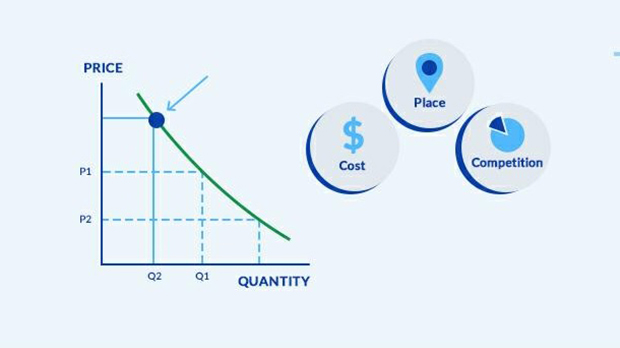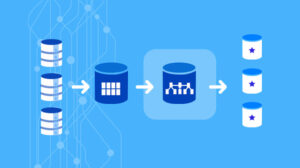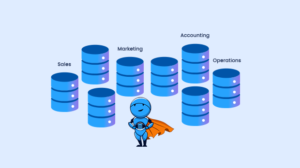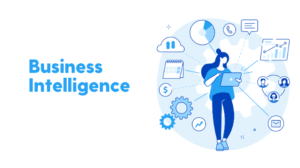Companies, sometimes, find it challenging to set a product’s pricing. The business managers and analysts search for answers to questions like, what will be the final cost of the product? Will customers pay a certain amount for the product? How to deal with competitors who are selling the same product at a nearly similar price? A thorough understanding of product pricing can help companies in customer acquisition, and retention and stay ahead in market competition.
Hence, the price skimming method guides you to understand how a product’s pricing affects a brand and helps you to sell your product at the right price.
Understanding The Basics of Price Skimming
In simple terms, price skimming is a company’s strategy to charge the highest initial price that the customers are willing to pay. Moreover, price skimming helps a company to evaluate customers of a specific market area where they are planning to sell their products. Eventually, the companies lower their products’ costs over a period of time, depending upon the customers’ demand and market competition.
Therefore, there are four methods in the price skimming model that helps in calculating the final cost.
- Cost-Based Pricing
- Competition-Based Pricing.
- Demand-Based Pricing
- Strategy-Based Pricing.
These price calculation methods are further sub-divided to narrow down our analysis on customers and pricing.
Cost-Based Price Skimming Strategy
The cost-based price skimming method plays a vital role in estimating our business prices. One must keep in mind that the product’s overall selling price shall be more than its cost for making a profit. The product’s cost is the final manufacturing charge. “Markup” is one such widely used cost-based pricing method that is used in several industries. To understand this concept clearly, let’s take an example.
Suppose a manufacturer designed a mobile accessory with the following cost:
- Material cost = 100/- rs.
- Labor cost = 50/- rs.
- Overhead cost = 30/- rs.
So, the overall cost would be Material cost+ Labor Cost+ Overhead = 180 /-.
Overhead costs are the operating costs of running a company that doesn’t influence the product’s making but is indirectly involved. It is an important aspect while setting up a product’s budget—for example, rent, insurance, repair, and maintenance, among others. Once the overall cost is determined, we add a markup percentage. The firm wants to make a profit after the cost recovery of the product (per unit).
An example of markup percentage is, for example, 50% (a standard percentage of the retail industry in India of the final cost), and that provides the final price of the product (it will include the overall manufacturing charges plus the profit that sellers wish to earn from per unit of the product).
The formula of the markup percentage would be

Competition-Based Price Skimming Strategy
It is divided into two following categories:
- Sealed bid
- Going rate
In a competition-based approach method, several companies compete to provide high-quality products and services to the customers at the lowest possible price.
Sealed Bid Price Skimming Strategy
In this price skimming strategy, private or government organizations arrange a bidding process for their upcoming projects. The companies then have to submit their quote prices for the same. Companies quote the highest or the lowest price according to the government organizations’ demands. Moreover, these organizations keep these quotes sealed and confidential until they find the most suitable one.
Going Rate Price Skimming Strategy
Going Rate is a pricing strategy in which a company examines the current selling rate of a product that they are trying to launch in the market.
Suppose a competitor is selling a product in the market for Rs. 50., as a result, the other company would try to sell the same product at a lower price, only if it wants to acquire a larger market share and stay afloat in a competitive environment.
Demand-Based Price Skimming Strategy
As the name suggests, in a Demand-Based price skimming strategy, the market price depends on the demand for the product in the market. And thus, the product’s pricing is ascertained accordingly. It is further sub-divided into two main categories, and they are as follows:
Perceived Value – depends on the customer’s review of the product. In this strategy, the company evaluates the customer’s willingness to pay a specific price (especially a high price) to buy a product that the company is planning to manufacture. It helps them to make a detailed analysis regarding customers’ views about the product.
Differentiated Pricing – The market rate or cost is unpredictable. It depends on the area where the manufacturer wants to sell its product. Assuming that a seller wants to sell a commodity at a particular marketplace where price-sensitive customers are visiting, the seller puts up an overpriced item. In such a situation, it is evident that the customer will hesitate before buying an overpriced product. Hence, companies must evaluate the market according to the parameters like products and pricing to avoid future loss.
Strategy-Based Price Skimming
Short-term profit sales and Penetration are two opposite sides of market pricing. Both have their advantages, and it entirely depends on the goals of a company.
Short-term profit sales – The companies who wish to earn short-term profits fix a very high price for their commodity. For example, an android phone ranges from 60000 to 70000 rupees. However, there are android phones available at a much lesser price but assume that the company wants to sell its product to only those willing to pay that price. And if the quality of the product is good, then word-of-mouth publicity will follow. Such strategies usually work for the short term until another similar item in the same range or lesser price did not hit the market.
Penetration – Business houses aiming to grasp a larger market share in a minimum duration will lower their product prices to attract price-sensitive customers. Moreover, discounts and offers also attract price-sensitive consumers. This method could be a smart marketing scheme.
For example, when Reliance launched its Jio sim cards, it became a rage overnight as it offered many free and discounted rates. Due to this, customers using other brands switched to Jio. This is one of the best examples of price skimming strategies. However, it depends on the sellers’ choice of which price skimming method they wish to apply to their products.
Conclusion
Price skimming strategies will help the business houses know their customers and strategically establish their product’s pricing. Exhaustive research on pricing through the methods mentioned above, like Cost-based strategy, Demand-based strategy, will help companies build their brands amongst the buyers. Therefore, while planning a price skimming strategy, a firm must ensure that the calculation tools and methods (Like the Markup method) they are using are high-end and sophisticated.
An efficient CRO team can guide you to take your business to the next level with a proper understanding of the business’s loopholes and address them and bring more online traffic to your website. It can help you integrate your online business with Google Analytics.
Google Analytics can guide you in tracking your customers’ shopping behavior and the products they are searching for, so you can make a thorough assessment before setting the prices or modifying them accordingly. To know more about Price skimming and Google Analytics,













